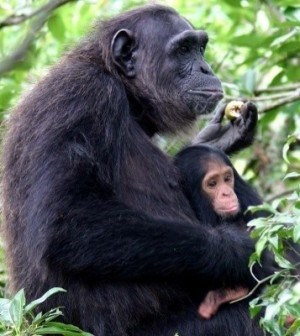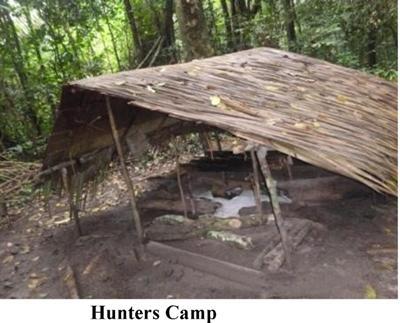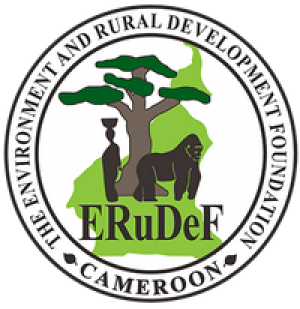[one_third] [/one_third]In Cameroon, natural resource allocation is largely the domain of only a few government institutions. Access to comprehensive information on land use allocation across sectors can facilitate improved coordination and analysis of how evenly resource rights are being distributed. Public knowledge of who has the rights to access which natural resources and according to what guidelines increases the degree to which all actors are held accountable (WRI, 2014).
[/one_third]In Cameroon, natural resource allocation is largely the domain of only a few government institutions. Access to comprehensive information on land use allocation across sectors can facilitate improved coordination and analysis of how evenly resource rights are being distributed. Public knowledge of who has the rights to access which natural resources and according to what guidelines increases the degree to which all actors are held accountable (WRI, 2014).
Human pressure on forests is increasingly coming from areas outside of the traditional forest sector. Rising global commodity prices have led to an increased focus on expanding mineral extraction and industrial agricultural plantations. Rapidly developing urban areas need more land to meet their needs. Much of this expansion has, and will, come at the expense of historically forested land (WRI, 2014).
Protected areas in the East and South Regions of Cameroon are very rich in biodiversity. These protected areas harbours critical plants and animals species of global importance. In fact the South-East of Cameroon is one of the hotspots of biodiversity richness in the world. There are constant anthropogenic threats to species habitat and distribution. Habitat fragmentation and increased forest destruction and deterioration have resulted in species isolation. With increasing threats to these resources resulting from poaching and overhunting; lumbering, shifting cultivation and large forest clearance for the establishment of huge agro-industrial plantations, it is likely that these resources would be on a nose-dive decline if nothing is done.
[one_half] [/one_half]Genetic connectivity among species will be of utmost importance if all the corridors linking these protected areas are securely protected. This will allow for genetic connectivity, easy migration of species and their long term survival.
[/one_half]Genetic connectivity among species will be of utmost importance if all the corridors linking these protected areas are securely protected. This will allow for genetic connectivity, easy migration of species and their long term survival.
The East Region of Cameroon habours the Deng Deng National Park, with several forest blocks, which include: Communal Forest of Belabo, and a large logging concession, Unité Foret d’Amenagement ( UFA) 10065, Unité Technique d”Operations (UTOs) among others. From the Deng Deng National Park to Dja Faunal Reserve, there are five communal forests linking both National parks. These communal forests include Doume, Doumaintang, Angossas, Messamena and Mindourou.
These areas (Dja and Deng Deng) harbour endangered and critically endangered wildlife species which include the Western Lowland Gorillas (Gorilla gorilla gorilla), the chimpanzee (Pan troglodytes ), the forest elephants (Loxodonta cyclotis), the Drill ( Mandrillus leucophaeus), the Buffalo (Syncerus nanus), Mandrill (Mandrillus sphinx), Leopard (Panthera pardus)etc and a lot of endangered endemic birds (Francolin sp), reptiles, and many amphibians species.
[one_third] [/one_third]It is based on this that the Environment and Rural Development Foundation (ERuDeF) wants to secure the Eastern corridors of Cameroon.
[/one_third]It is based on this that the Environment and Rural Development Foundation (ERuDeF) wants to secure the Eastern corridors of Cameroon.
Securing the Survival of Wildlife species through Protection of corridors of the Eastern Conservation Complex will ensure genetic connectivity (gene flow) and migratory patterns of wildlife species in the Conservation Complex.
The main objective of this project is to ensure genetic connectivity of wildlife species between Protected Areas (P As) through the management of National Parks and Communal Forests in the East and South Regions of Cameroon.
The genetic linking of the Deng Deng National Park biological populations to those of the Dja Biosphere Reserve is considered very critical at this time when extractive industries are on the rapid rise in the East Region of Cameroon. This project will also involve the management of the community and council forests found along this corridor.
[one_third] [/one_third]To implement this project, over US$800,000 will be require for the next 3 years. US$4,200 will sponsor the identification, determination and migration patterns of wildlife population of one of the five communal forest corridors linking the Deng Deng National Park and the Dja Reserve. Some US$2,600 will promote alternatives Income Generating Activities (IGA) to unsustainable natural resource use. Also, some US$3,000 will be used to Increase engagement with traditional authorities, elites, NGOs and the Ministry of Forestry and Wildlife.
[/one_third]To implement this project, over US$800,000 will be require for the next 3 years. US$4,200 will sponsor the identification, determination and migration patterns of wildlife population of one of the five communal forest corridors linking the Deng Deng National Park and the Dja Reserve. Some US$2,600 will promote alternatives Income Generating Activities (IGA) to unsustainable natural resource use. Also, some US$3,000 will be used to Increase engagement with traditional authorities, elites, NGOs and the Ministry of Forestry and Wildlife.
The project that will span for three years, will be carryout by a team of experts from the Environment and Rural Development Foundation (ERuDeF) with long years of experience in conservation, Agronomy, Biomonitoring, and forest management. More information can be got on www.erudef.org
